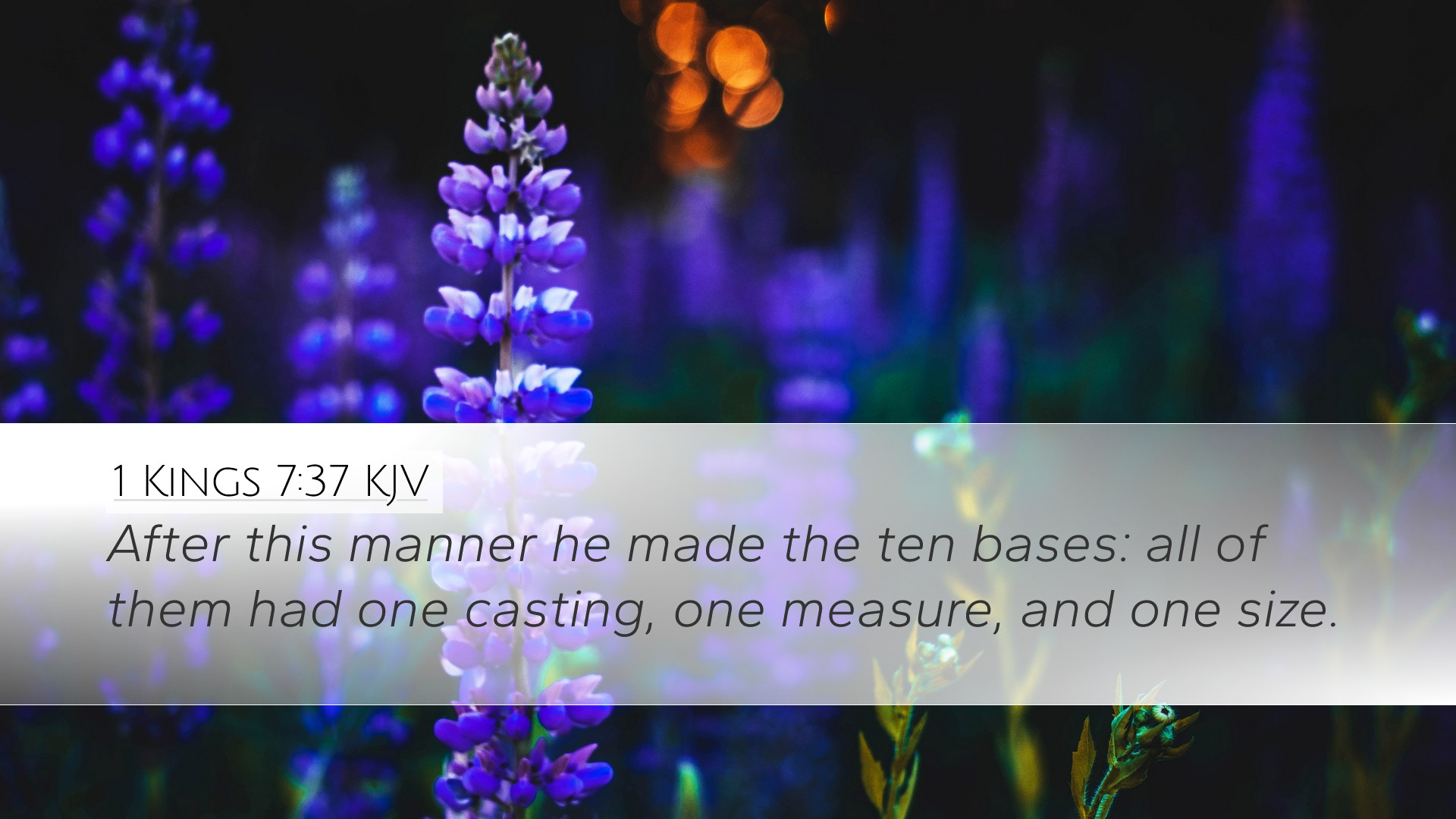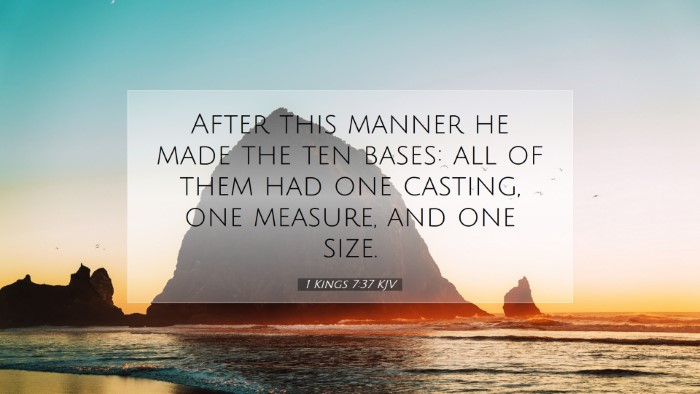Commentary on 1 Kings 7:37
Verse Text: "According to the same proportion he made all the pillars. Now he made the pillars of the temple; he made two pillars of brass, each eighteen cubits high, and a line of twelve cubits did compass either of them about." (1 Kings 7:37, KJV)
Introduction
This verse is part of the description of King Solomon's temple. The narrative speaks to the grandeur and architectural significance of the structures built during this period. 1 Kings 7:37, in particular, highlights the precision and beauty involved in constructing the temple's pillars. The commentary integrates insights from esteemed Bible scholars such as Matthew Henry, Albert Barnes, and Adam Clarke.
Architectural Significance
Matthew Henry's Insights: Henry meticulously discusses the proportions and dimensions of the pillars, noting how they exemplify both stability and aesthetic appeal. He observes that the ordered design reflects divine order, suggesting that the temple serves as a physical representation of God’s presence among His people.
Albert Barnes' Commentary: Barnes elaborates on the architectural precision in creating pillars that are consistent in design and dimensions. He asserts that the pillars were not merely functional but also symbolic, representing strength and permanence. The repetition in the phrase "according to the same proportion" signifies the importance of uniformity in this grand undertaking.
The Symbolism of the Pillars
Adam Clarke's Perspective: Clarke emphasizes that the two brass pillars, named Jachin and Boaz, symbolize strength and stability. Jachin translates to "He will establish," indicative of God's promise and reassurance, whereas Boaz means "In Him is strength," reflecting the inherent power of God in the temple’s purpose.
This duality among the pillars offers deep theological implications, suggesting that God both establishes His covenant and provides the strength needed to fulfill it. Thus, the pillars stand as a reminder of God's assurance and might within the community of Israel.
The Materials and Their Meaning
The use of brass in the construction of the pillars is also significant. Brass, often associated with strength and durability, denotes not only the physical properties but also spiritual qualities such as purity and refinement.
- Brass as a Symbol: Represents judgment and endurance in Scripture, being a common material for items meant for divine service.
- Technique of Construction: The meticulous crafting of brass pillars suggests God's attention to detail in His creation and interactions with humanity.
Lessons for Contemporary Faith Communities
The architecture of the temple, particularly the pillars, can inspire modern faith communities to appreciate the significance of physical spaces as sites of worship and divine encounter. It underscores the importance of craftsmanship and intentionality in creating environments conducive to spiritual growth.
Moreover, the symbolism of the pillars invites believers to reflect on their foundations—what they rely upon for spiritual strength and stability in their faith journey.
Conclusion
1 Kings 7:37 serves as a reminder of God’s involvement in human endeavors, particularly in the establishment of sacred spaces. The commentary from Henry, Barnes, and Clarke collectively enriches our understanding of this verse by drawing attention to the architectural, symbolic, and spiritual implications of the temple pillars. As believers study this scripture, they are encouraged to reflect on the stability and strength found in reliance on God, who establishes His people and empowers them.


